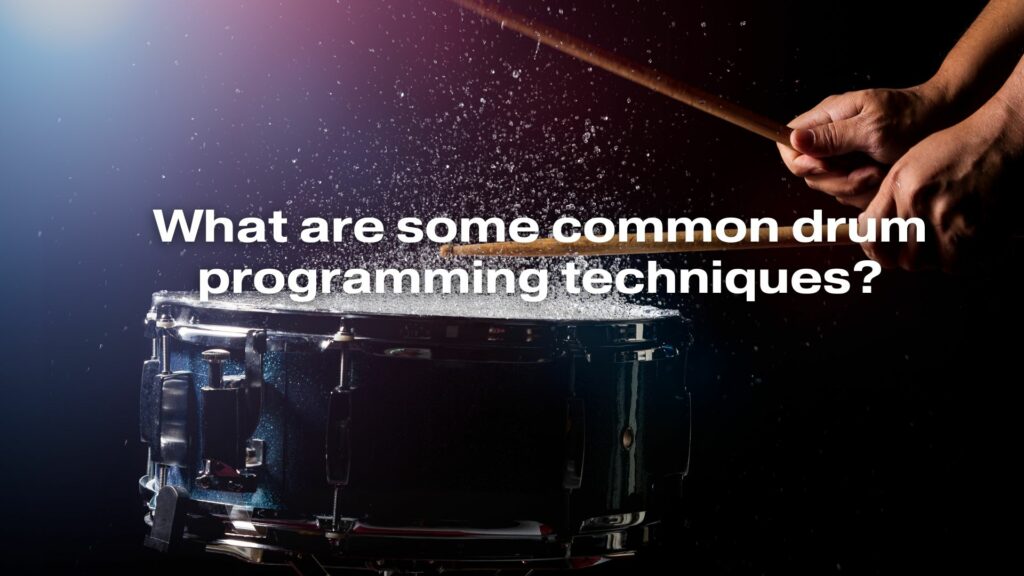Drum programming is a fundamental skill in music production, used to create rhythmic patterns and beats in various genres. Whether you’re working with electronic music, hip-hop, or even rock, understanding common drum programming techniques is essential to craft engaging and dynamic rhythms. In this guide, we’ll explore several prevalent drum programming techniques used by producers and beatmakers.
- Basic Drum Patterns:
Start with a basic drum pattern that includes the kick drum, snare drum, and hi-hats. For example, in a 4/4 time signature, you might place the kick on the 1st and 3rd beats and the snare on the 2nd and 4th beats. Hi-hats fill in the spaces between.
- Ghost Notes:
Introduce ghost notes, which are subtle, quieter hits on the snare or other drums. They add depth and dynamics to your beat. Ghost notes are often placed between primary beats, creating a bridge between strong accents.
- Syncopation:
Experiment with syncopation by emphasizing offbeat or unexpected notes. Placing accents on weaker beats or between beats can create a more complex and interesting drum pattern. Syncopation adds a unique flavor to your rhythms.
- Polyrhythms:
Create polyrhythms by programming two or more contrasting rhythms simultaneously. This technique is often used in complex drumming styles like jazz and Afro-Cuban music. Polyrhythms can result in intricate and mesmerizing grooves.
- Drum Fills:
Incorporate drum fills into your patterns. Drum fills are short, improvised patterns used to transition between different sections of a song. They add excitement and anticipation. Fills can be placed at the end of a phrase or section.
- Layering and Stacking:
Utilize layering and stacking to create multi-dimensional drum patterns. This technique involves stacking different drum samples or layering electronic sounds to add complexity and depth to your beats. It’s common in electronic and hip-hop music.
- Swing and Groove:
Add swing and groove to your drum programming to give your beats a unique feel. Swing involves delaying or rushing certain notes to create a more relaxed or shuffled rhythm. Groove is all about the overall feel and flow of your drumming.
- Change in Dynamics:
Manipulate the dynamics of your drum programming by varying the loudness and intensity of your hits. Playing louder or softer at specific moments can add drama and contrast to your music.
- Cross-Stick Technique:
Instead of playing the snare with a standard hit, use the cross-stick technique by tapping the rim of the snare drum with the drumstick. This produces a distinctive sound and is commonly used in blues and jazz.
- Linear Drumming:
Linear drumming means that no two drums or cymbals are hit simultaneously. Each note is played successively, creating an intricate, non-overlapping pattern. Linear drumming can be challenging but rewarding for creating complex rhythms.
- Odd Time Signatures:
Experiment with odd time signatures like 5/4, 7/8, or 9/8. These can lead to unique and distinctive drum patterns. Odd time signatures add complexity and intrigue to your music.
In conclusion, drum programming is a versatile and creative skill that allows you to craft engaging and unique rhythms. By experimenting with these techniques and finding the right balance between simplicity and complexity, you can create compelling drum programming that enhances your music production. Practice, creativity, and an ear for rhythm are key to refining your drum programming skills and achieving your desired sound.


